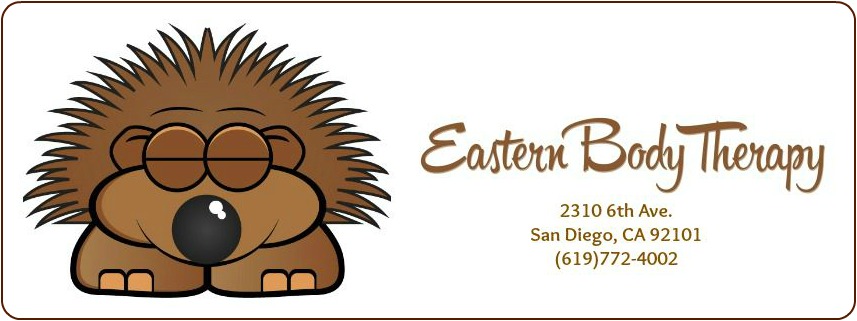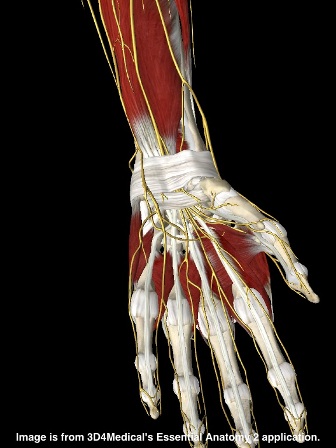 |
||
|
||||||||||
| About Us | ||||||||||
|
||||||||||
| Schedule Appointment | ||||||||||
| Help For Your Health | ||||||||||
|
||||||||||
| Testimonials/Success Stories | ||||||||||
| Our Blog | ||||||||||
 Yelp About Us Yelp About Us |
||||||||||
| Newsletter Archives | ||||||||||
| Resources and Links | ||||||||||
| FAQs | ||||||||||
| Home |
What is CTS? | What is the Carpal Tunnel? | Other Causes of Symptoms? | Treatment | Print this Page What is Carpal Tunnel Syndrome? Carpal tunnel syndrome is a painful condition of the wrist and hand. It is common in people who use their hands repetitively in activities such as using a computer or mouse, chopping things, sawing, painting, bicycling, knitting, and others. Typical symptoms include pain at the wrist crease on the palm side of the arm, and may also include numbness, tingling, or pain in the thumb and index finger, sometimes going into the middle finger. In severe cases, there may be reduced grip strength. back to top The carpal tunnel is a narrow space between the bones of the wrist and a broad, tough piece of connective tissue called the transverse carpal ligament. The muscles which move the fingers originate in the forearm, and the tendons from these muscles cross the wrist to get to the fingers they move. The transverse carpal ligament holds these tendons in the groove between the carpal bones, and keeps them from becoming twisted or out of position with normal use of the hand. In addition to the tendons which allow your fingers to curl inwards to grip things, one branch of the median nerve also fits into this space. When any of these tendons becomes irritated, usually from overuse, there can be swelling. Too much swelling within the carpal tunnel can cause pressure on the median nerve which causes the pain, tingling, numbness, and other symptoms. back to top Is there anything else which could cause these symptoms? Carpal tunnel syndrome is frequently misdiagnosed. Approxiamately 70% of the people who have come to Eastern Body Therapy saying they have carpal tunnel syndrome have been inappropriately given this diagnosis, or at least have another condition complicating the issue. A compression of the nerve root at the 6th cervical vertebra in the neck can cause nearly identical symptoms, but will sometimes (not always!) be accompanied by a stiff or sore neck or a pulling sensation down the arm. Compression of the median nerve closer to the elbow can also cause nearly identical symptoms. If there is tingling or numbness in the palm as well as the thumb and index finger, this is likely to be the source of the problem. Pain, numbness, or tingling in the little finger and ring finger do NOT come from the carpal tunnel. This is the pathway of the ulnar nerve, which may be compressed at the wrist, elbow, shoulder, or neck. Too often, a person will tell a friend about wrist pain and the friend will say “Oh, you’ve got carpal tunnel!” That person will then go to a general practitioner and say “I have carpal tunnel”. Some general practitioner/family practice physicians are highly skilled in the diagnosis of orthopedic and neurological complaints, but the average family doctor has had about a day of training in diagnosing these types of complaints. Many will look at the wrist, note some slight swelling, and make a diagnosis without digging deeper. If symptoms are not relieved with pain medication and physical therapy, the patient may be referred to an orthopedic specialist. The misdiagnosis SHOULD be caught at this point, but often if a patient is referred to a specialist already diagnosed, the specialist does not do a thorough examination and assumes the diagnosis is correct. Many patients have had multiple surgeries on their carpal tunnels which never solved their problem because it was in the neck! back to top Treatment for carpal tunnel syndrome Standard allopathic treatment for carpal tunnel syndrome includes pain medication, splinting of the wrists, and physical therapy. If pain persists, or there is a loss of grip strength, a surgical procedure to release the transverse carpal ligament (which makes room for the swollen tendons to swell without pressing on the median nerve) may be recommended. Alternative treatment can be extremely effective for the pain and nerve irritation of true carpal tunnel syndrome. Treatment may include acupuncture with or without electrostimulation, chiropractic adjustment of the carpal bones, and manual release of the forearm muscles which move the wrist, elbow, and fingers. Splints worn at night or during repetitive activity can be a good idea. A period of relative rest where the activity causing the problem is avoided can also be extremely helpful, along with consistent stretching of the forearm and wrist. An ergonomic evaluation followed by appropriate changes to a computer work station, kitchen, bicycle, or other symptom aggravating factor can also go a long way towards removing the source of the problem. For patients with wrist pain NOT related to the carpal tunnel, alternative treatment can also be highly effective. Acupuncture, chiropractic, manual release, stretching, and ergonomic changes can relieve pain while addressing the source of the problem for neck, shoulder, elbow, and other wrist issues. The key to treatment is accurate diagnosis so the treatment addresses the root of the problem and not just the symptom. Lisa Nicholson, L.Ac., is a California licensed and Nationally certified acupuncturist, and a Diplomate of the National Board of Acupuncture Orthopedics. She is an expert at determining the source of wrist and arm conditions, and providing appropriate acupuncture and/or manual therapy treatment for most conditions. If your condition comes from the neck and requires chiropractic or surgical intervention, she will advise you and provide a referral to a quality qualified practitioner. back to top
|
*DISCLAIMER: Testamonials used on this site are real comments made by people who have worked with us. As with any medical treatment, we cannot guarantee results and individual experiences may vary.
Images of people on this site are used for illustrative purposes only. The models depicted should not be construed to endorse any products or services promoted on this site, nor should they be construed to have any healthcare issues discussed on this site.Copyright © 2001-2017 Eastern Body Therapy. All Rights Reserved.

 What is the Carpal Tunnel?
What is the Carpal Tunnel?